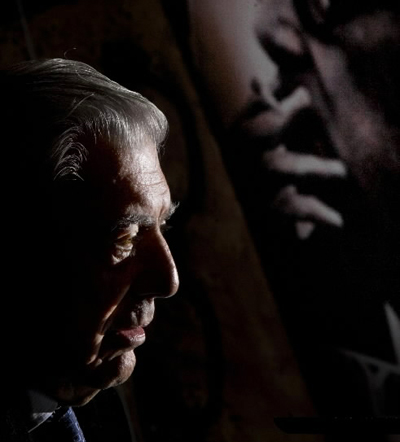
Photography via the Baltimore Sun
Recently, the committee that awards the Nobel Prize for Literature has favored obscure writers that, though talented, have little international reputation or influence. Bucking this trend (and odds that the prize would go to a poet, a Kenyan, or Cormac McCarthy) the Nobel Prize for Literature was awarded to Peruvian novelist Mario Vargas Llosa, a giant of world literature and a major figure in the Latin American Boom of the mid-late 20th century.
Vargas Llosa was awarded the prize “for his cartography of the structures of power and his scathing images on resistance, uprisings, and individual defeat”. That is unquestionably the most precise assessment of his work you will find. Beyond that sentence, Vargas Llosa is remarkably difficult to define. His body of work is, among both recent Nobel laureates and Boom authors, arguably the most varied. In his novels one can see threads of many of the major literary movements of the 20th century, especially modernism, existentialism, and postmodernism.
Vargas Llosa is also notable for his politics. Unlike many other Boom authors — including fellow Nobel laureate Gabriel Garcia Marquez, who he once famously punched in the face — Vargas Llosa soured of the Cuban revolution and its leader in the mid ’70s and has slowly drifted to the political right ever since. After leading a protest against the nationalization of the Peruvian financial system in 1987, he launched a presidential campaign, and endured abuse and death threats, before losing his bid in 1990.




 Facebook
Facebook Permalink
Permalink Digg
Digg Reddit
Reddit LinkedIn
LinkedIn StumbleUpon
StumbleUpon Tumblr
Tumblr

